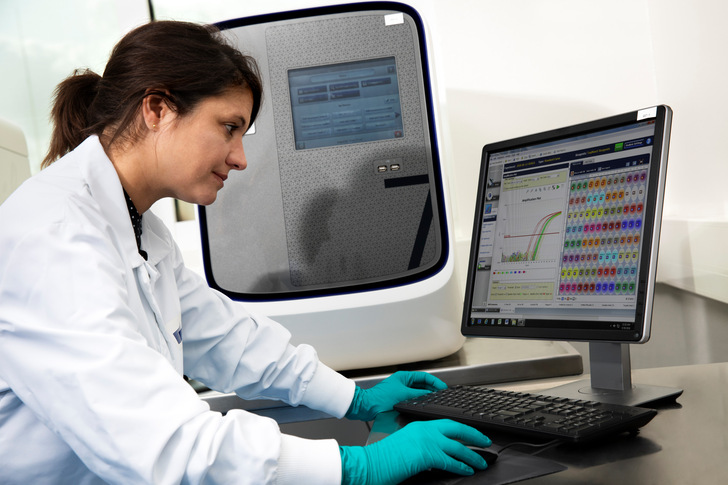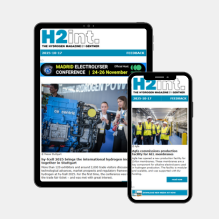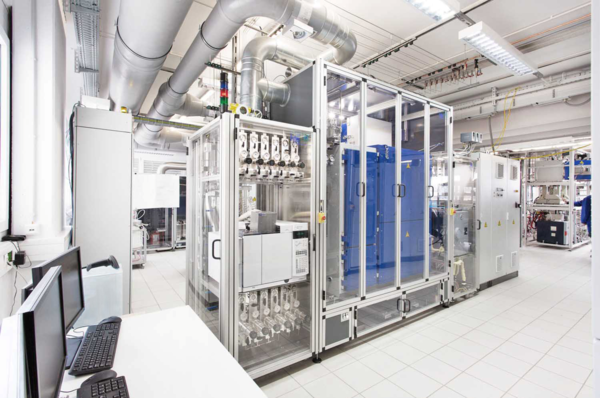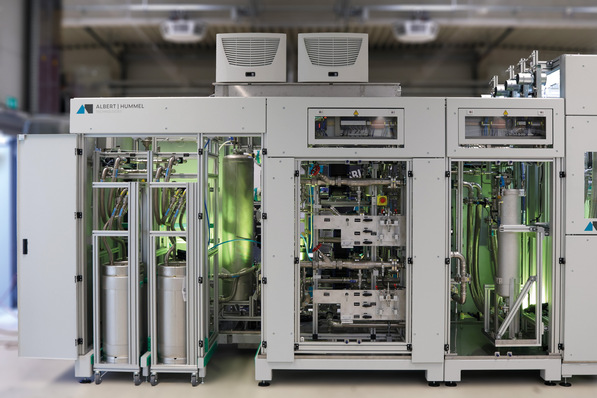HZwei: Mr. Crema, how important is FP10 for hydrogen research and the hydrogen economy in Europe?
Luigi Crema: We are in a very critical period. Hydrogen is developing globally as one of the future fuels, and there will be a lot of competition. So far, Europe has been investing more than other countries, and we have a strong position with a lot of know-how in the sector. European universities are well positioned. The “Draghi Report” from 2024 highlights the importance of hydrogen for maintaining Europe’s technological leadership. But at the moment, it is not clear what kind of support hydrogen technologies can expect. Ideally, we can work together and establish a new joint undertaking with commonly agreed priorities. That is what this event is about. If things do not work out, Europe may fall behind in global competition. This could have serious consequences for both universities and the industrial sector. We saw this happen with photovoltaics and battery technology. Europe was well positioned in the early stages, but when the market began to grow, we lacked a strategy to keep up.
What does the European Commission need to do now?
What we need is an integrated approach to safeguard the European market and its competencies. One way to achieve this is through a shared programme that includes research and innovation, industrialization, and early market development. Small- and large-scale demonstration projects and industrial market initiatives must be aligned with policies from the EU and its member states. When European companies invest heavily to scale up their manufacturing and increase production, they need a market where their products can be sold and integrated.
At the same time, we must ensure that whenever Europe invests public money in building a hydrogen market, it is invested in European enterprises. For example, the European Hydrogen Bank initially required that at least 75 percent of the electrolyzer stacks be sourced from Europe. We would be much in favour to increase this treshold even beyond. The European Commission should introduce more binding structural requirements for a minimum share of European technologies. This would attract investment to Europe. Today, Chinese electrolyzers already offer the lowest costs. If we always invest public money in the cheapest components, we will give China an additional advantage. They have already reduced their production costs through extensive support – we should do the same for European companies.
In addition, we should not view research as a linear process that ends once a market is established. We must continuously reduce costs and develop next-generation technologies to remain competitive five to ten years from now.
What is the goal of your event regarding FP10?
First, after hearing from the hydrogen and research sectors, we hope the European Commission will recognize the importance of hydrogen research and the hydrogen economy. This must be taken into account when setting up the Multiannual Financial Framework (MFF) and FP10.
This may fall even inside an European Competitiveness Fund (ECF), in which the Commission aims to consolidate various strategic programmes, including FP10.
Nothing is certain yet, but we are concerned that there may be fewer resources available, making research funding more competitive. We want to make it clear that the EU should not reduce funding for research and innovation. We would like also to underline the strategic importance of some sectors for Europe, with added values compared to others of less relevance in terms of impact and positioning in the global competition.
We are confident that building a hydrogen economy through strong support for research and innovation will bring great value to Europe – and that this will lead to the best decisions for Europe.
About Luigi Crema
Physicist Luigi Crema is Director of the Sustainable Energy Center at the Fondazione Bruno Kessler in Trento, Italy. He also serves as President of Hydrogen Europe Research, a leading research association in the European hydrogen sector, representing more than 150 research institutions. In this role, he is also actively involved in shaping the Clean Hydrogen Partnership.
Hydrogen Europe Research
Navigating the EU hydrogen funding landscape
EU framework programmes for research and innovation form the backbone of European research funding. The ninth framework programme (FP9), known as Horizon Europe, has a total budget of nearly €96 billion. Depending on interpretation, approximately €3 to €4 billion of this is earmarked for hydrogen-related research projects. EU Member States can apply for funding under FP9, but are also required to contribute their own share. The programme runs until the end of 2027 and is expected to be succeeded by FP10 starting in 2028. In September last year, Hydrogen Europe Research, together with more than 110 stakeholders, signed a joint declaration calling on the EU to increase funding for research and innovation in the context of FP10.
This transition is closely linked to the overarching Multiannual Financial Framework (MFF) of the EU, which defines the entire budget planning for the period from 2028 to 2034. Most recently, 1.1% of the EU’s gross domestic product flowed into the EU budget. Determining the share for the next period is a politically sensitive issue. In July 2025, the European Commission is expected to present a proposal, which will then be discussed in the autumn with the European Parliament and the Council.
Clean Hydrogen Partnership combines public and private funding
The most important EU funding programme specifically dedicated to hydrogen to date is the Clean Hydrogen Partnership (CHP). This public-private partnership is receiving over €1 billion from the EU’s Horizon Europe programme (FP9) between 2021 and 2027. Industry partners have committed to contributing at least the same amount—also in the form of in-kind contributions. Since 2023, some calls for proposals have also included funding from the United Kingdom. In total, approximately €2.5 billion is available. Funds are allocated through annual work programmes and competitive calls for proposals. In 2025, the focus will be on “Hydrogen Valleys” and the production of hydrogen from renewable energy sources.
In addition, many EU Member States have launched national hydrogen programmes, often as part of the EU’s COVID-19 recovery package. The EU has made more than €670 billion available for the national recovery and resilience plans of its Member States—partly in the form of loans, partly as grants. Italy, for example, received around €200 billion for its national resilience plan, of which approximately €3.5 billion is allocated to the hydrogen economy.
Also well known are the Important Projects of Common European Interest (IPCEI), which are being implemented in four waves. Projects from the first three waves—Hy2Tech, Hy2Use and Hy2Infra—have already been announced. The third wave includes numerous projects related to Germany’s core hydrogen network. It is important to note that IPCEI is not an EU funding instrument. Recognition as an IPCEI project merely means that Member States are exempt from the EU’s normally strict state aid rules.
Strategically significant, although not linked to its own funding mechanism, is the “Mission: Clean Hydrogen” initiative. It forms part of global climate diplomacy under the framework of the UN Climate Change Conferences (COP). According to a report by the European Commission’s Joint Research Centre (JRC), hydrogen (including hydrogen-based fuels) is expected to account for an average of 27% of final energy demand in the transport sector in EU scenarios by 2050.









